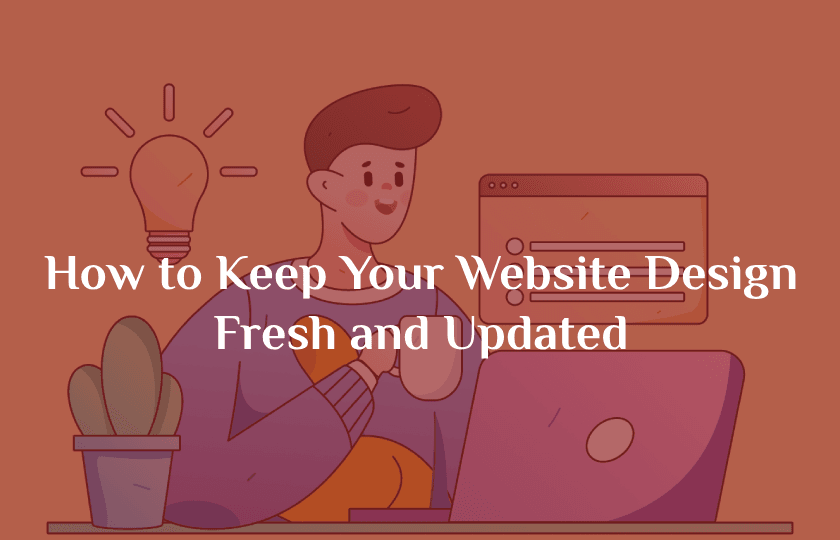Your website is often the first point of contact between your brand and potential customers. It acts as your digital storefront, sales representative, and customer service hub — all rolled into one. But unlike physical stores that are cleaned and updated regularly, websites are often left untouched for years. In the fast-paced digital world, that’s a recipe for stagnation.
A stale website can result in higher bounce rates, lower SEO rankings, reduced engagement, and lost revenue. On the other hand, regularly refreshing your website design keeps your brand relevant, improves user experience, and boosts conversions.
In this guide, we’ll explore the best strategies to keep your website design fresh, functional, and aligned with current trends without needing to rebuild it from scratch.
1. Conduct Regular Website Audits
Before making any changes, you need to understand what’s working and what isn’t.
Key Elements to Audit:
Visual design (outdated layouts, images, typography)
Navigation (usability, structure, broken links)
Page load speed
Mobile responsiveness
SEO performance
Content accuracy and freshness
Use tools like Google Analytics, PageSpeed Insights, and Hotjar to gather both qualitative and quantitative data. Then, prioritize updates based on user needs and business goals.
Pro Tip: Schedule a design audit at least twice a year to stay proactive.
2. Refresh Visual Elements
Web design trends evolve quickly. What looked cutting-edge two years ago might feel outdated today.
Visual Updates to Consider:
Update your hero image or video
Introduce modern fonts and cleaner typography
Adjust color schemes to reflect current brand direction
Redesign buttons and calls-to-action (CTAs)
Replace stock photos with authentic, high-resolution images
A visual refresh doesn’t mean rebranding — it simply means making incremental tweaks to ensure your site looks modern and trustworthy.

3. Embrace Modern Web Design Trends (Selectively)
Incorporating current trends can make your site feel contemporary — but you should use trends strategically, not just for the sake of style.
Popular Trends in 2025:
Dark mode and color toggles
Micro-animations and scroll-triggered effects
3D elements and dynamic visuals
Custom cursors and interactive backgrounds
Minimalist design with strong white space
Voice-enabled navigation
Don’t overload your site with too many trends. Instead, pick one or two that align with your brand personality and user expectations.
4. Update Your Content Regularly
Design isn’t just visual — it’s also about content. Outdated text, expired promotions, or inactive blog sections all signal neglect.
Content Areas to Keep Fresh:
Homepage headlines and CTAs
About Us and Team pages
Product/service descriptions
Case studies and testimonials
Blog content (consider updating old posts with new stats)
Fresh content improves both user trust and SEO. It tells visitors that your business is active, responsive, and on top of industry trends.
5. Improve Website Navigation and Structure
Even the most beautiful website will fail if users can’t find what they need. As you add more content or features over time, your site structure can become cluttered.
Ways to Refresh Navigation:
Reorganize menus with better labeling
Use a mega menu if you have many categories
Add breadcrumb navigation for easier backtracking
Implement an advanced search function
Include footer navigation for secondary links
A streamlined structure enhances UX and helps with site crawlability and internal linking, which boosts your SEO.
6. Optimize for Mobile — Always
Mobile users now account for over half of all web traffic globally, and mobile-first design is no longer optional.
How to Keep Mobile Design Updated:
Test responsiveness on multiple devices (phones, tablets)
Ensure buttons and links are thumb-friendly
Use mobile-specific features like click-to-call and auto-fill
Avoid intrusive pop-ups or large modals
Optimize image sizes and lazy-load media
Responsive design isn’t a one-time fix. As new devices and screen sizes emerge, you need to retest and adapt regularly.
7. Update CTAs and Conversion Elements
CTAs are the bridge between interest and action. If your site’s CTAs are outdated or unclear, they could be hurting your conversions.
Refresh Ideas:
Try new button placements or colors
Test different CTA copy (e.g., “Get Started” vs. “Try for Free”)
Add urgency with time-sensitive offers
Include trust badges, testimonials, or guarantees near CTAs
A/B test CTA locations and designs to optimize performance
Even small tweaks to CTA design and placement can yield significant increases in engagement and sales.
8. Revisit Brand Messaging and Tone
As your business evolves, so should your website’s tone of voice and messaging.
Ask yourself:
Does your site still speak to your target audience?
Is your tone professional, casual, friendly, or authoritative — and is it consistent?
Are your value propositions clearly communicated?
Consider updating your mission statement, headlines, taglines, and taglines to reflect your current brand voice.
9. Improve Accessibility
Modern web design must be inclusive. Updating your design to meet accessibility standards not only helps users with disabilities but also improves usability for everyone.
Accessibility Updates to Make:
Add alt text to all images
Use high-contrast text and background colors
Ensure keyboard navigation is supported
Use ARIA labels for screen readers
Avoid autoplaying media
Refer to WCAG guidelines and use tools like Axe or WAVE to identify and fix accessibility issues.

10. Add or Enhance Interactive Elements
Interactive elements make your website more engaging and keep visitors on the page longer.
Options to Consider:
Live chat or AI chatbot
Interactive product demos or quizzes
Clickable infographics or maps
Animated graphs and data visualizations
Personalized content or dynamic greeting messages
These updates should serve a functional purpose — not just add visual flair.
11. Check and Update Technical Features
Behind every great design is solid technical performance. Outdated plugins, broken integrations, and security issues all hurt UX.
What to Keep Updated:
CMS and plugin versions
Broken links and 404 errors
Contact forms and submission flows
Page load speeds and server performance
SSL certificates and cookie consent banners
Consider a regular monthly technical check to prevent issues before they affect users.
12. Incorporate Social Proof
People trust people. If your design doesn’t showcase customer testimonials, case studies, or reviews, you’re missing out.
Easy Ways to Add Social Proof:
Add customer logos
Embed Google or Trustpilot reviews
Feature testimonials on key landing pages
Share recent client success stories or statistics
Include real-time activity (e.g., “100 people purchased today”)
Refreshing these elements every few months helps maintain credibility and relevance.
13. Monitor Analytics and Behavior Tracking
If you’re not tracking user behavior, you’re flying blind. Use analytics to understand what content, design elements, and pages need improvement.
Key Metrics to Watch:
Bounce rate
Session duration
Click-through rates on buttons
Scroll depth
Funnel drop-off points
Use tools like Google Analytics, Microsoft Clarity, or Hotjar to gather insights and guide your design updates based on actual data.
14. Highlight New Products, Features, or Services
Don’t let your site fall behind your business. If you’ve launched new offerings, updated pricing, or added services — your design should reflect that.
Where to Feature Updates:
Hero banners
Feature sections on the homepage
Dedicated product/service pages
News/blog sections
Newsletter signup prompts
Keeping this content updated shows that your business is active and evolving, encouraging users to check back regularly.
15. Create a Website Design Maintenance Schedule
Keeping your design fresh shouldn’t be an afterthought — it should be part of your business strategy.
Example Maintenance Schedule:
Monthly: Check for broken links, outdated promotions, plugin updates
Quarterly: Refresh images, review analytics, A/B test CTAs
Biannually: Full design audit, content review, performance testing
Annually: Trend review, brand alignment check, UX testing
By sticking to a regular schedule, you can avoid expensive redesigns and maintain a consistently high-quality experience.
Conclusion:
Keep It Fresh, Stay Ahead
Your website should evolve as your business does. A fresh, modern design isn’t just about aesthetics — it impacts SEO, user trust, conversions, and competitive positioning.
By making small, strategic updates regularly, you keep your digital presence vibrant, relevant, and effective — without the cost or disruption of a full redesign.
So don’t wait until your site looks outdated or underperforms. Instead, treat your website like a living asset — one that grows, adapts, and thrives with your business.



